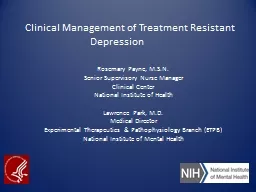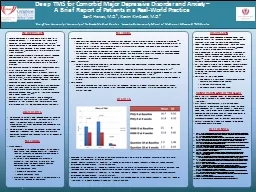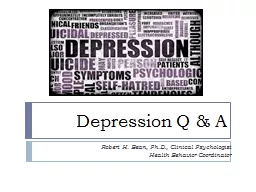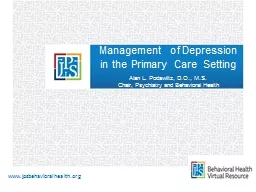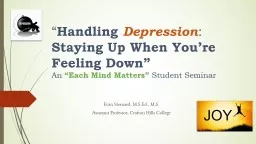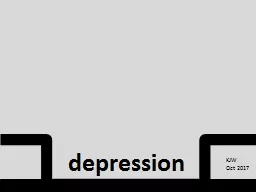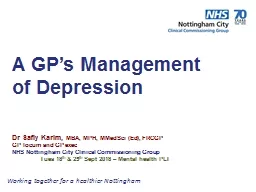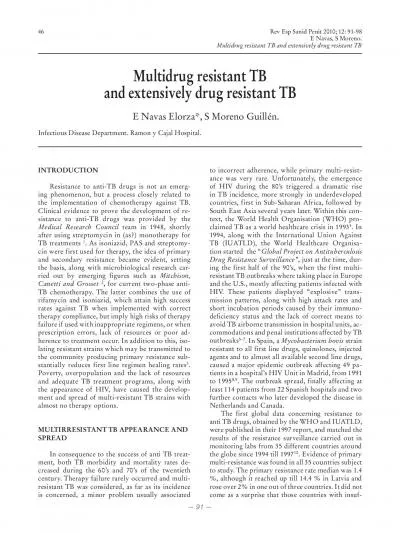PPT-Clinical Management of Treatment Resistant Depression
Author : liane-varnes | Published Date : 2017-11-14
Rosemary Payne MSN Senior Supervisory Nurse Manager Clinical Center National Institute of Health Lawrence Park MD Medical Director Experimental Therapeutics amp
Presentation Embed Code
Download Presentation
Download Presentation The PPT/PDF document "Clinical Management of Treatment Resista..." is the property of its rightful owner. Permission is granted to download and print the materials on this website for personal, non-commercial use only, and to display it on your personal computer provided you do not modify the materials and that you retain all copyright notices contained in the materials. By downloading content from our website, you accept the terms of this agreement.
Clinical Management of Treatment Resistant Depression: Transcript
Download Rules Of Document
"Clinical Management of Treatment Resistant Depression"The content belongs to its owner. You may download and print it for personal use, without modification, and keep all copyright notices. By downloading, you agree to these terms.
Related Documents

